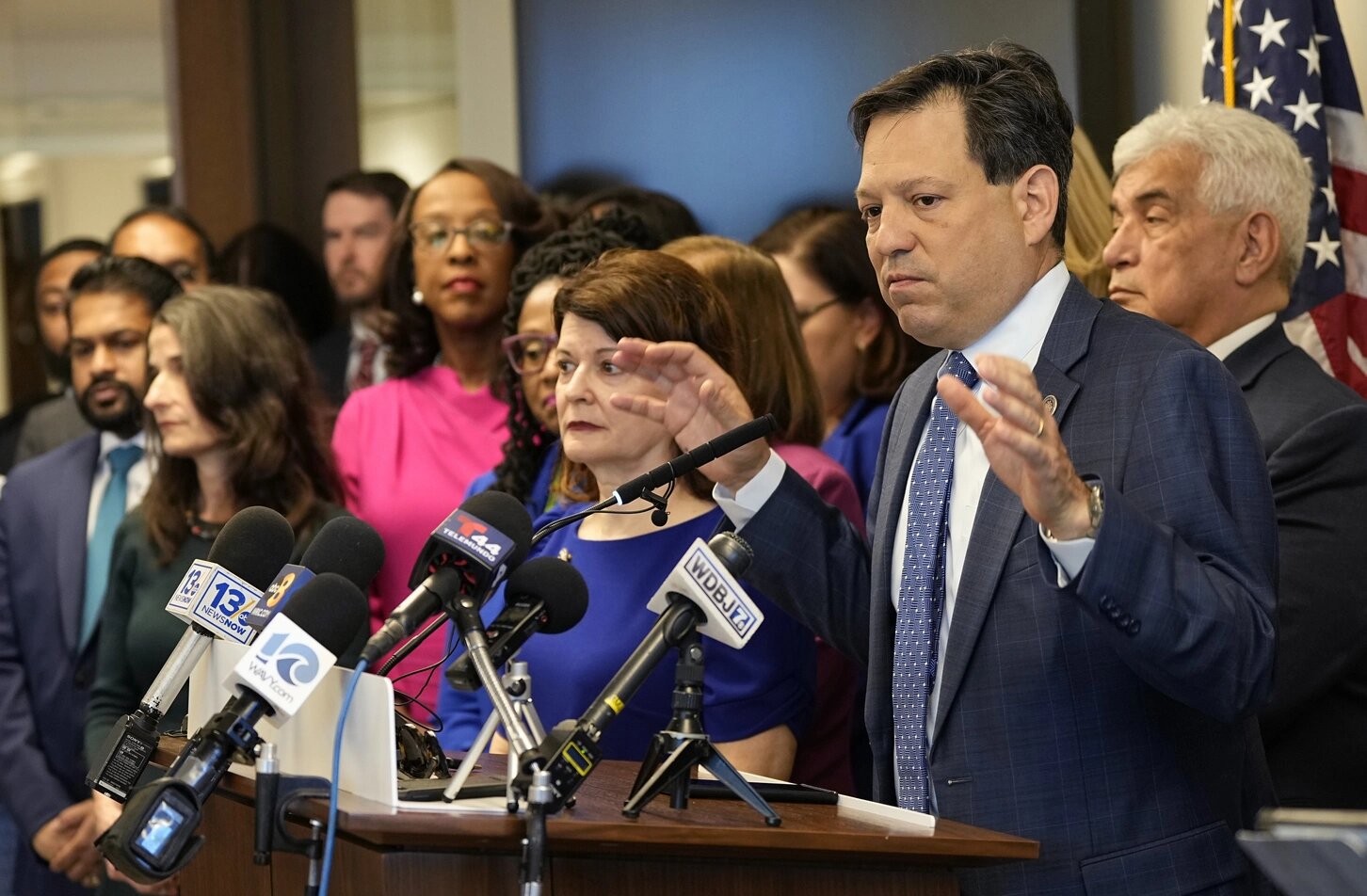State lawmakers are launching a rushed effort to overhaul the state’s maps, which currently have a 6-5 split.

Virginia Democrats are poised to enter the nationwide redistricting battle, according to three Democrats familiar with the plans, taking on an effort to redraw the state’s congressional lines just days before closely watched elections in the state.
How exactly the state’s map will change is not yet clear. The state’s delegation is currently split between six Democrats and five Republicans, with three members — Democrat Eugene Vindman and Republicans Rob Wittman and Jen Kiggans — in potentially competitive races.
The three people familiar with the process were all granted anonymity to discuss the not-yet-public plans.
“We are opening up the process reluctantly because of this aggressive midterm redistricting by Republicans in response to Trump across the country,” said one Virginia Democrat familiar with the plans.
Another top Virginia Democrat confirmed that Wittman’s and Kiggans’ seats are the most likely to be redrawn.
The surprise effort would need to come together quickly, and it could face procedural and political hurdles. Virginia has a constitutionally mandated process that hands redistricting over to a bipartisan commission, and the decision to circumnavigate or eliminate that commission must ultimately go in front of voters.
To do so, both chambers of Virginia’s Legislature must pass the proposed amendment in sessions bookending an election. Democratic leaders in the state are relying on a special session called by GOP Gov. Glenn Youngkin in May 2024 that was left open to push through the measure for the first time, ahead of the state’s elections in less than two weeks. The Legislature would then need to pass the proposal again in a new session after the November elections.
Voters would then have to approve the change; nearly two-thirds of Virginians approved of the constitutional amendment creating the commission in 2020.
Virginia Scope, a newsletter focused on the state’s politics, and The New York Times first reported some details on Virginia Democrats’ plans.
Scott Surovell, the majority leader of the Virginia Senate, confirmed the plans to the Times, saying “We are coming back to address actions by the Trump administration.” He did not immediately respond to messages from POLITICO on Thursday.
Democratic groups quickly applauded the move. Mandara Meyers, executive director of The States Project, said Virginia lawmakers are “keeping options on the table to respond to extreme rightwing gerrymandering next year.”
A spokesperson for Youngkin, who is term-limited, did not immediately respond to a request for comment.
The last-minute move risks upending the election for governor in November, along with legislative contests. Democrat Abigail Spanberger is considered a favorite over Republican Lt. Gov. Winsome Earle-Sears for the state’s open governorship; all 100 of the state House seats are on the ballot in November as well, with Democrats currently holding 51 of those seats.
Spanberger, a former member of Congress, said in August that she had “no plans” to draw new lines in Virginia. Virginia’s redistricting process does not require buy-in from the governor.
A spokesperson for Spanberger did not respond to a request for comment on Thursday.
Earle-Sears’ campaign sought to paint the redistricting fight as a “cheap political stunt.”
“This is what panic looks like,” Earle-Sears spokesperson Peyton Vogel said in a statement. “It’s pathetic. Voters see through it.”
Recent polling in the Virginia governor’s race shows Spanberger with a healthy lead over Earle-Sears. A Washington Post-Schar School poll released Thursday showed the Democrat leading by 12 points.
The move by Virginia Democrats is just the latest in a tit-for-tat redistricting war that has swept the country and stands to upend the midterms.
So far, Republicans have drawn seven seats that favor the GOP across three states, including a map passed in North Carolina on Wednesday.
In California, voters in November will decide whether a new map backed by Democratic Gov. Gavin Newsom will go into effect for 2026, which could net Democrats five seats. Other Democratic states that can redistrict, like Illinois and Maryland, have so far not jumped in despite growing pressure from within the party.
